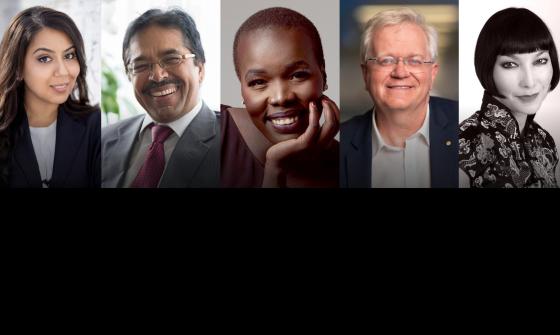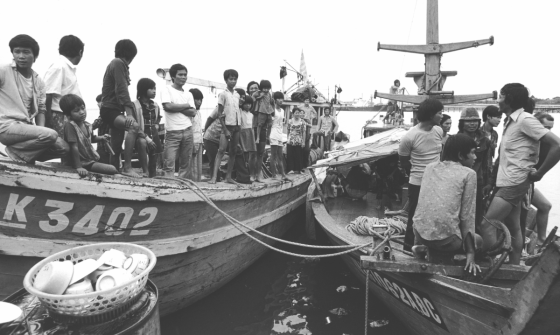Gamboa: A family defined by race
During the war when I was ready to give my life for your country there was no question of race, colour or creed involved. Nor was there any such question involved when I married an Australian girl in Australia.
One of the many personal stories featured in the Hopes and Fears: Australian Migration Stories exhibition is that of Lorenzo Gamboa and his fight to return to his Australian-born wife and children after his deportation in 1946.
The Library is fortunate to have oral history interviews with both Joyce and Lorenzo Gamboa, conducted by Barry York as well as the Papers of the Gamboa family. The Papers include one of Gamboa Lorenzo’s US Military Payment Certificates, the official Australian government telegram informing Joyce that her husband could return to Australia, as well as photographs of the family, and Lorenzo with his American legion colleagues later in life. The newspaper clippings and scrapbook show the intense interest that the media and public had in the Gamboa’s’ story throughout their lives.
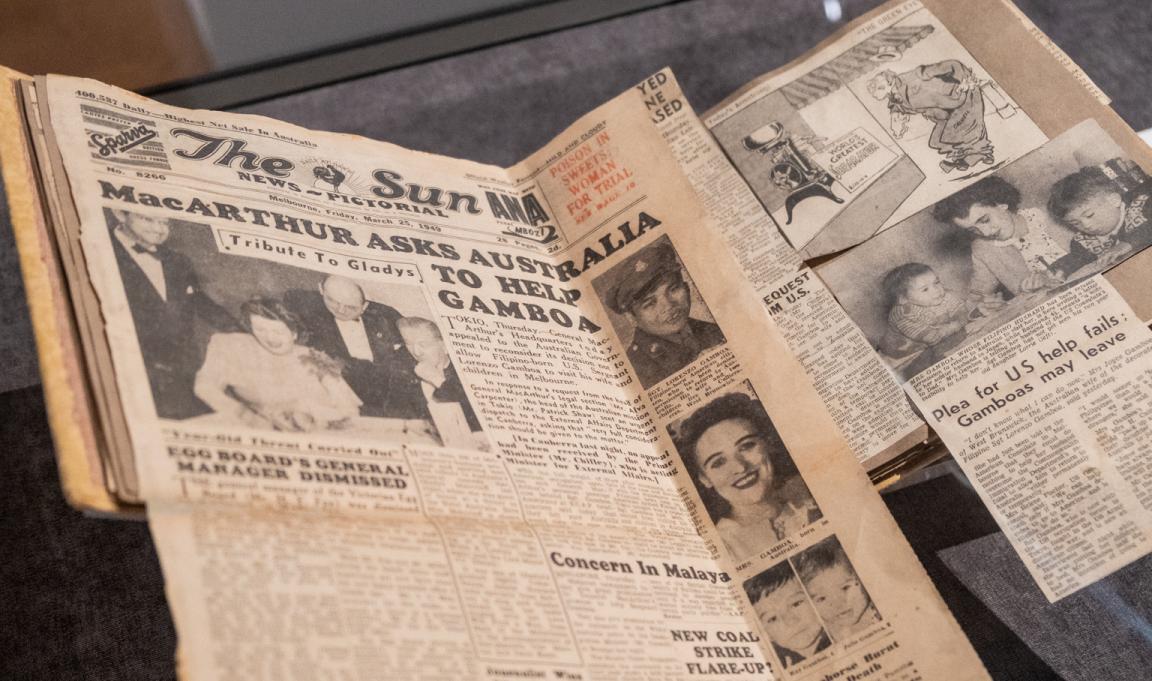
Album of newspaper cuttings relating to the Gamboa family from the Papers of the Gamboa family, 1949–99, nla.gov.au/nla.cat-vn997866
Album of newspaper cuttings relating to the Gamboa family from the Papers of the Gamboa family, 1949–99, nla.gov.au/nla.cat-vn997866
Lorenzo Abrogar Gamboa was born in Pangasinan, Philippines on 11 November 1918. At age 18 he was conscripted into the Filipino army for six months, then he worked as a labourer on the wharves in Manila for three years. It was his talent as a boxer that won him a scholarship to the Philippines National University in 1940. He hoped to make it to the 1940 Olympics but World War II intervened.
As a reservist he reported for service in the Filipino army just before the Japanese attacked the Philippines on 8 December 1941. After being injured he was placed in a hospital ship with 67 other Filipinos, which left Manila on 31 December 1941. They disembarked at Sydney where Lorenzo recovered at Concord Hospital. In March 1942 they were sent to Melbourne with the US Army as most Australian forces were still in the Middle East. While stationed in Melbourne Lorenzo met Joyce Cain, whom he later married on 9 October 1943.
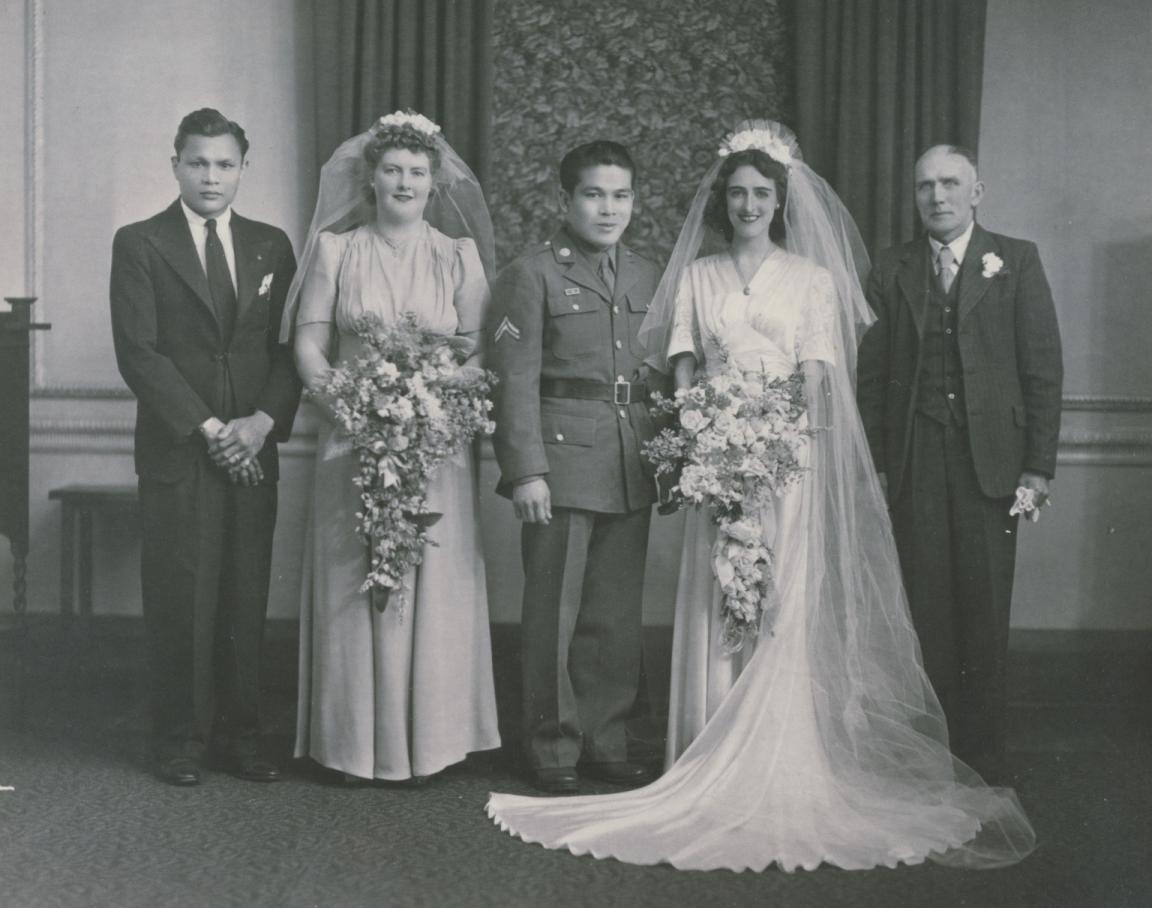
Wedding photo of Lorenzo Gamboa and Joyce Cain, 1943 from the Papers of the Gamboa family, 1949–99, nla.gov.au/nla.cat-vn997866
Wedding photo of Lorenzo Gamboa and Joyce Cain, 1943 from the Papers of the Gamboa family, 1949–99, nla.gov.au/nla.cat-vn997866
In July 1942, Lorenzo formally enlisted with US army as the Philippines were under USA control at this time. He was placed on the personal staff of General Douglas MacArthur in Port Moresby, Papua New Guinea. He was later stationed at Leyte, Philippines, and was in Manila at the time it was liberated from the Japanese in March 1945. Like other servicemen, Lorenzo took part in boxing contests. He sparred with Billy Williams, Johnny Dillon and Jim Scully amongst others at tournaments in Brisbane and Hobart. It was through boxing that he earned his first £200 and it helped him be accepted by white Australians.
After the war ended in 1945, Lorenzo worked with his father-in-law on the Victorian railways, however a problem with his ration book led to his discovery by the Department of Immigration. He was ordered to leave the country within three months. In June 1946, Lorenzo travelled to San Francisco, USA on a ship carrying the Australian brides of US servicemen, leaving behind a pregnant Joyce and first son, Raymond.
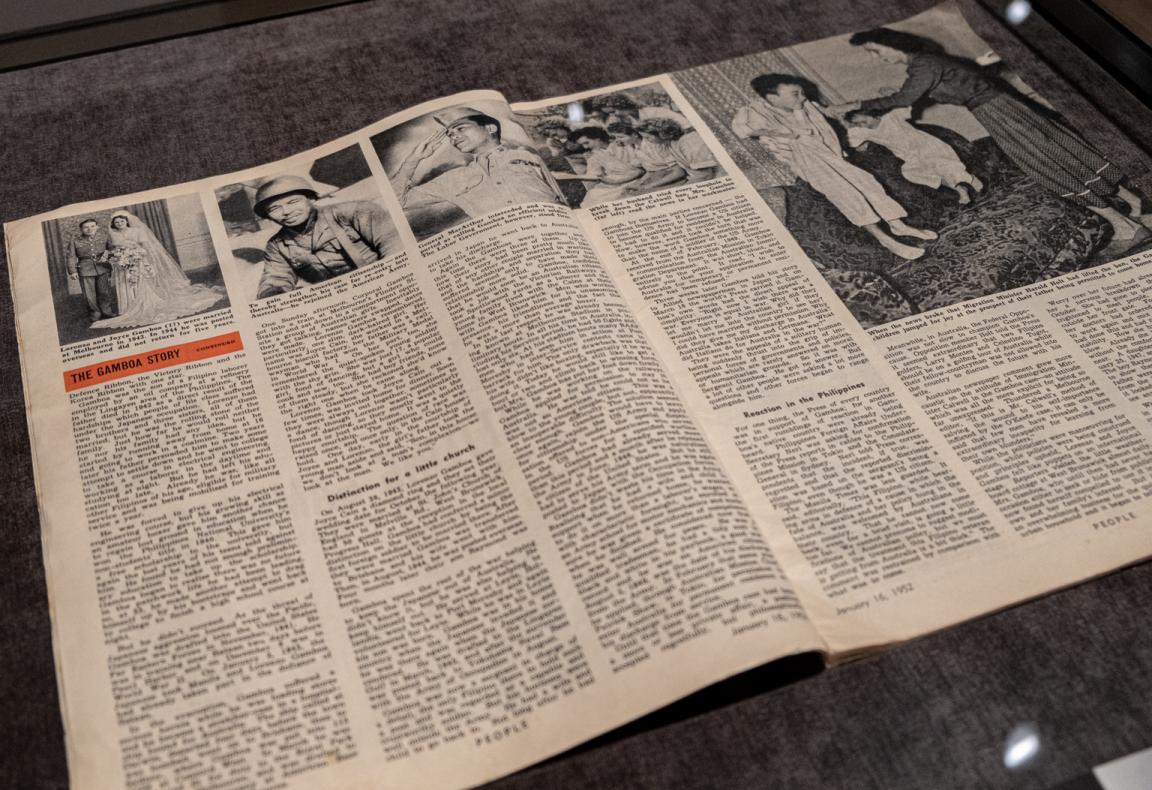
'The Gamboa Story', People, 16 January 1952 from the Papers of the Gamboa family, 1949–99, nla.gov.au/nla.cat-vn997866
'The Gamboa Story', People, 16 January 1952 from the Papers of the Gamboa family, 1949–99, nla.gov.au/nla.cat-vn997866
He took up US citizenship on the basis of his military service and re-joined the US Army. While stationed in Japan, he applied for re-entry to Australia. The Labor Minister for Immigration, Arthur Calwell, refused this application in 1949. General MacArthur intervened, writing directly to Calwell and describing Lorenzo as ‘a very able and efficient soldier’. However, Calwell continued to refuse even temporary entrance on the basis of race.
By chance, Lorenzo met Australian foreign correspondent Denis Warner in Tokyo. Warner broke the news of Lorenzo’s situation in the media, which sparked a diplomatic spat between the Philippines and Australia.
In the meantime, Lorenzo was posted to Korea and he wrote to Joyce once a week, while she worked in a biscuit factory. It was fortunate that his military wage could help support the family from afar.
After the election of a new Australian government in November 1949, Harold Holt became Immigration Minister and reversed Calwell’s decision. Lorenzo visited Australia in 1951 and was able to settle permanently with Joyce and their children in Australia in 1952.
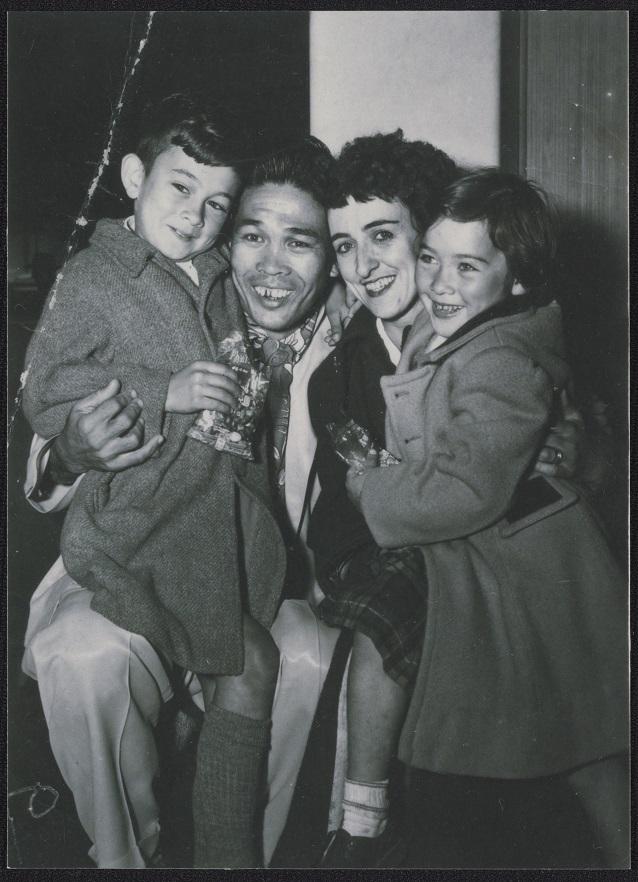
The Gamboa family reunited in Australia, 1952, from the Papers of the Gamboa family, 1949–99, nla.gov.au/nla.cat-vn997866
The Gamboa family reunited in Australia, 1952, from the Papers of the Gamboa family, 1949–99, nla.gov.au/nla.cat-vn997866
Lorenzo worked as a motor mechanic in Lilydale, Victoria and later the family moved to Queensland. His daughter, Julie, became a nurse and a beauty contestant, winning Miss Junior Barwon Heads in 1964. His son Raymond, was apprenticed to a furniture factory. Lorenzo eventually became an Australian citizen in 1993.
Every second year, the Gamboas visited relatives in the Philippines. The Filipino press reported on their visits and Lorenzo’s reflections on life in Australia. The constant media attention throughout their lives could sometimes be a strain as both Lorenzo and Joyce described themselves as shy. However, both used every opportunity to voice their opposition to racism and demonstrate that their mixed-race family was an antidote to the White Australia Policy. Joyce died in 2004, while Lorenzo died in 2012.
Find this, and more migration stories, in the Hopes and Fears exhibition closing on 2 February 2025.
Visit us
Find our opening times, get directions, join a tour, or dine and shop with us.


